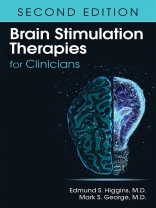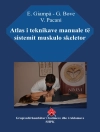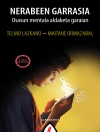A comprehensive survey of the state of current practice, this new edition of Brain Stimulation Therapies for Clinicians provides thoroughly updated information on the growing list of electrical stimulation therapies now in use or under study, including electroconvulsive therapy (ECT), vagus nerve stimulation (VNS), transcranial magnetic stimulation (TMS), deep brain stimulation (DBS), cortical stimulation (CS), and transcranial direct current stimulation (TDCS), as well as new coverage of promising treatments such as low intensity focused ultrasound pulsation (LIFUP) and temporal interference stimulation (TI). After a brief course on the fundamentals of electricity and a refresher on neuroanatomy, the text explores how electricity works within biological systems before progressing to the chapters on individual therapies, which cover the history and evolution of the treatment, the techniques involved, clinical indications, side effects, and an up-to-date review of the evidence base supporting its use. The book is designed to help the reader cut through the initially daunting ‘alphabet soup’ (e.g., ECT, TMS) by providing a clear and straightforward analysis of the prevailing techniques — an indispensable resource for both clinicians and patients seeking in-depth knowledge of these acronyms and methods.
The book’s noteworthy features are many: Refinements in treatment protocols since the last edition are discussed in detail. For example, the sections on ECT cover advances such as focal electrically administered seizure therapy (FEAST) and magnetic seizure therapy (MST), while the TMS chapter covers theta burst and recent approval for obsessive-compulsive disorder. The underlying science is addressed in the initial review of electricity and physics, information that is foundational to these treatment modalities, but that clinicians do not encounter in the medical school curriculum. The section also addresses the parameters for brain stimulation and how to determine the right dose. A separate chapter is devoted to low intensity focused ultrasound pulsations (LIFUP) and temporally interfering (TI) electric fields, emerging treatments that have the potential to noninvasively stimulate focal locations deep in the brain without surgery or the implantation of hardware. The section on using DBS for treatment-resistant Parkinson’s disease (PD) is thorough, authoritative, and a boon to clinicians assessing the viability and efficacy of treatment options for their PD patients. The new edition retains the amusing, but always informative sidebars highlighting the history of brain experimentation and applications of brain stimulation techniques
Written in a down-to-earth, accessible style by authors at the forefront of progress in the field, Brain Stimulation Therapies for Clinicians is a rigorous, evidence based review of clinical data that focuses on what we know, what we don’t know, and the strength of the evidence.
表中的内容
About the Authors Foreword to the First Edition Preface to the Second Edition Acknowledgments Chapter 1. Introduction Chapter 2. Basic Electricity Chapter 3. Electrical Brain Chapter 4. Electroconvulsive Therapy Chapter 5. Vagus Nerve Stimulation Chapter 6. Transcranial Magnetic Stimulation Chapter 7. Deep Brain Stimulation and Cortical Stimulation Chapter 8. Transcranial Direct Current Stimulation Chapter 9. Other Techniques Chapter 10. Future Techniques Appendix by Disease Appendix by Stimulation Method Index
关于作者
Edmund S. Higgins, M.D., is a clinical associate professor of psychiatry and family medicine at the Medical University of South Carolina. He has a private psychiatric practice and is a staff psychiatrist for the South Carolina Department of Corrections. Mark S. George, M.D., is a distinguished professor of psychiatry, radiology, and neuroscience, as well as director of the Brain Stimulation Laboratory and former director of the Center for Advanced Imaging Research at the Medical University of South Carolina in Charleston. He is also a staff psychiatrist at the Ralph H. Johnson VA Medical Center, Charleston.











